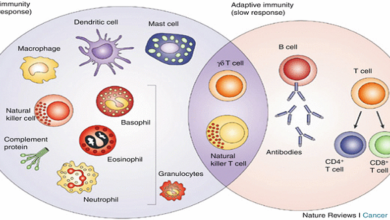
Diet for blood group a
Historically, blood group A individuals have adapted well to an agrarian form of diet, which evolved later and consists primarily of fruits, vegetables, nuts, and grains. Generally, little or no meat should be allowed, and then only as a condiment. Milk and cheese should also be eliminated, especially in type A2 individuals. Grains and beans contain higher amounts of naturally occurring agglutinins, which make their assimilation by the body more difficult. Larger amounts of fruits and vegetables are recommended for group A individuals, who tend to secrete lower amounts of hydrochloric acid and thus metabolize calories and obtain energy at a slower rate. Raw fruits and vegetables are higher in natural enzymes, which promote digestion, absorption, and assimilation.
Diet for blood group b
Apparently, the blood group B diet evolved later than that of group O or A and is associated with nomadic and herding societies. People who are group B do well with diets that are high in fermented dairy products. These individuals do better on ovo-lacto vegetarian diets, which are higher in products that contain milk, cheese, and eggs. Natural agglutinins in such foods as chicken, sunflower, sesame, and buckwheat may cause problems for a group B person and should be used in moderation. Group B individuals are generally associated with lower levels of hydrochloric acid in the stomach and may need enzyme and hydrochloric acid assistance if higher amounts of proteins are ingested. Group B persons do well with a good balance of the different food groups allowed rather than emphasis on a particular food type.
Diet for blood group ab
Apparently, the blood group AB diet evolved last, and it is felt to be associated with modern diets. Because of the presence of both A and B antigens, group AB individuals are well adapted to vegetarian, grain, and seafood diets with small to moderate amounts of milk products. Natural agglutinins in such foods as red meat, chicken, potatoes, tomatoes, and many grains and beans may cause problems for a group AB person and should be used only in moderation.
Organic Foods
The word organic has become somewhat meaningless, thanks to the excess of acid rain and other environmental pollutants now prevailing. However natural a farmer or gardener tries to be, what drops from the sky does count! But the term organic still indicates that something has been grown in chemical-free ground, so organic products are still worth pursuing. A friend of mine, who used to work in a mortuary, told me years ago that bodies are taking a lot longer to decompose because of the preservatives ingested with food while alive. The very thought horrified me; the idea of the “walking preserved” is a chilling one.
Culinary Herbs and Spices
Culinary herbs and spices are chosen for their flavors to delight the palate. To me they also represent fun, color, and health. They are masters at dancing with our taste buds. They are nature’s aid to the relaxation of stomach muscles. They also encourage better production of balanced and suffi cient gastric juices. They contain elements that help counteract toxic foods. Some contain antifungal, antibacterial, and antiviral ingredients, giving some help to harmonize food combinations that might otherwise fi ght it out and cause indigestion and gas; still others help the liver with its job of constantly negating and purifying. You can grow fresh herbs and spices and use dried or freshly imported ones.





